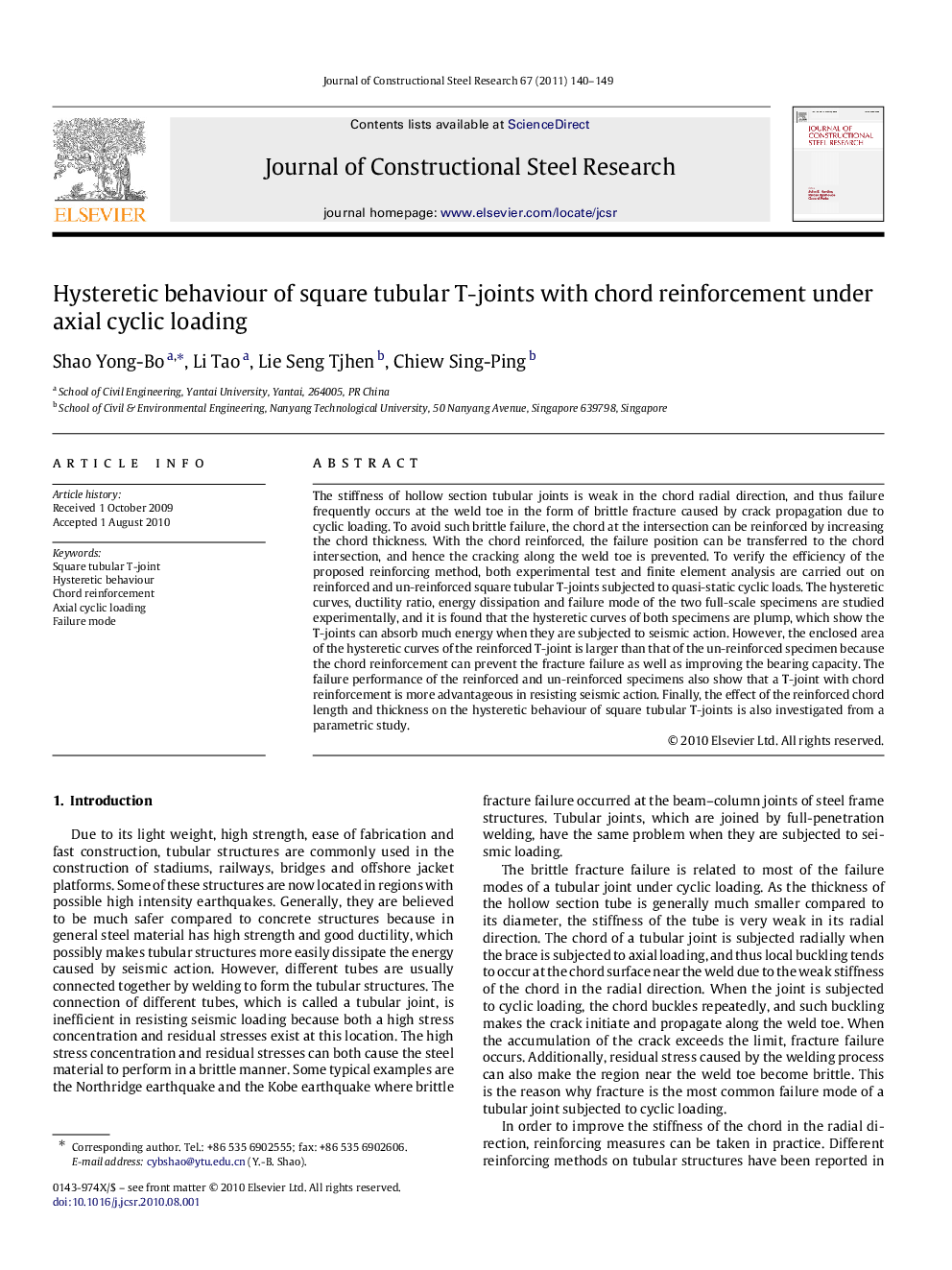| Article ID | Journal | Published Year | Pages | File Type |
|---|---|---|---|---|
| 285672 | Journal of Constructional Steel Research | 2011 | 10 Pages |
The stiffness of hollow section tubular joints is weak in the chord radial direction, and thus failure frequently occurs at the weld toe in the form of brittle fracture caused by crack propagation due to cyclic loading. To avoid such brittle failure, the chord at the intersection can be reinforced by increasing the chord thickness. With the chord reinforced, the failure position can be transferred to the chord intersection, and hence the cracking along the weld toe is prevented. To verify the efficiency of the proposed reinforcing method, both experimental test and finite element analysis are carried out on reinforced and un-reinforced square tubular T-joints subjected to quasi-static cyclic loads. The hysteretic curves, ductility ratio, energy dissipation and failure mode of the two full-scale specimens are studied experimentally, and it is found that the hysteretic curves of both specimens are plump, which show the T-joints can absorb much energy when they are subjected to seismic action. However, the enclosed area of the hysteretic curves of the reinforced T-joint is larger than that of the un-reinforced specimen because the chord reinforcement can prevent the fracture failure as well as improving the bearing capacity. The failure performance of the reinforced and un-reinforced specimens also show that a T-joint with chord reinforcement is more advantageous in resisting seismic action. Finally, the effect of the reinforced chord length and thickness on the hysteretic behaviour of square tubular T-joints is also investigated from a parametric study.
